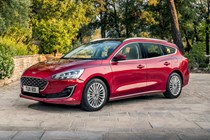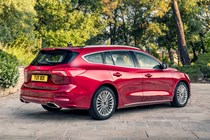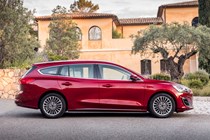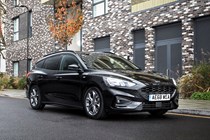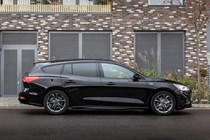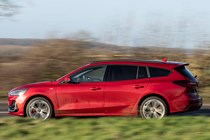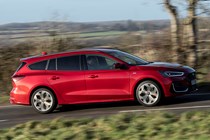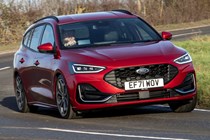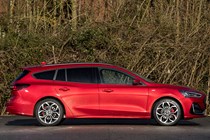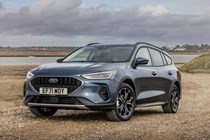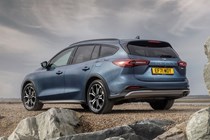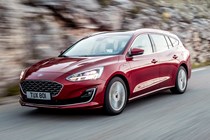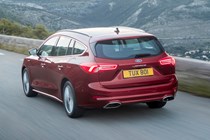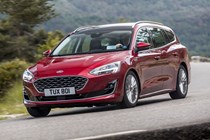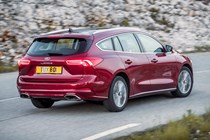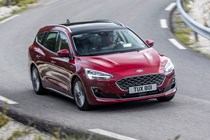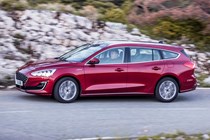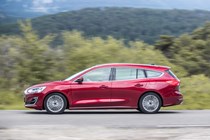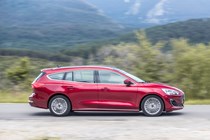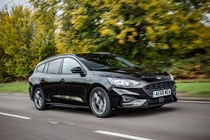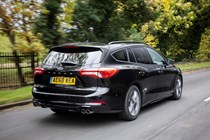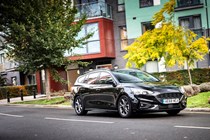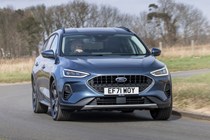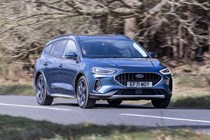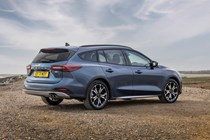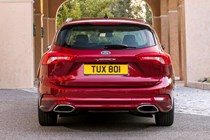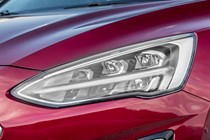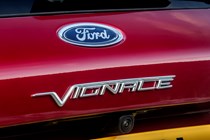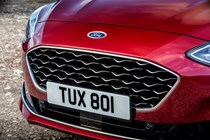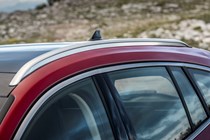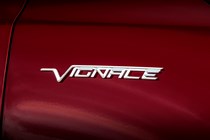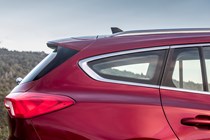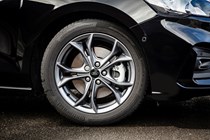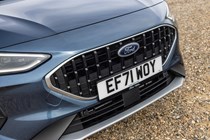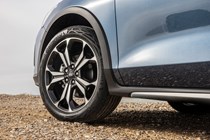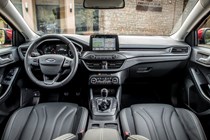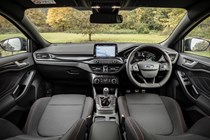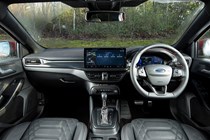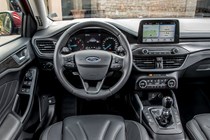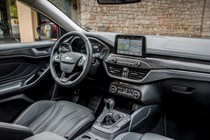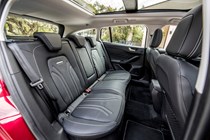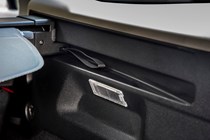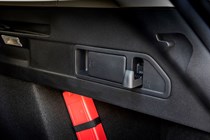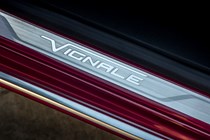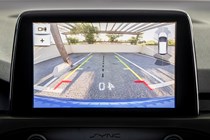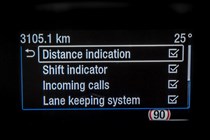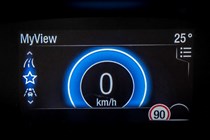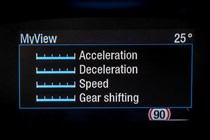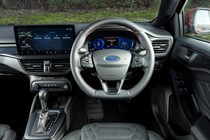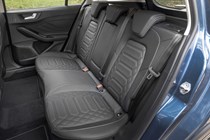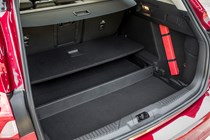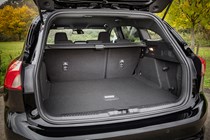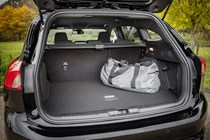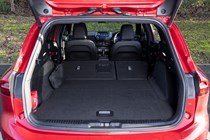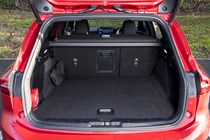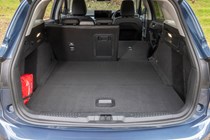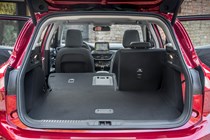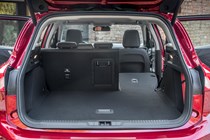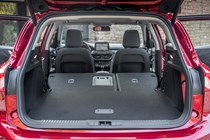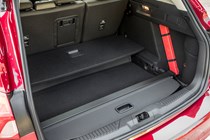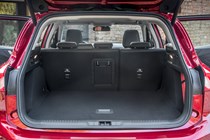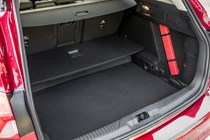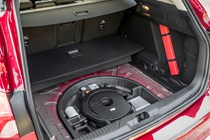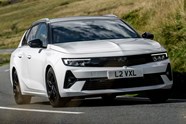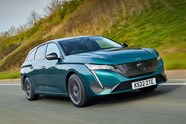Ford Focus Estate review
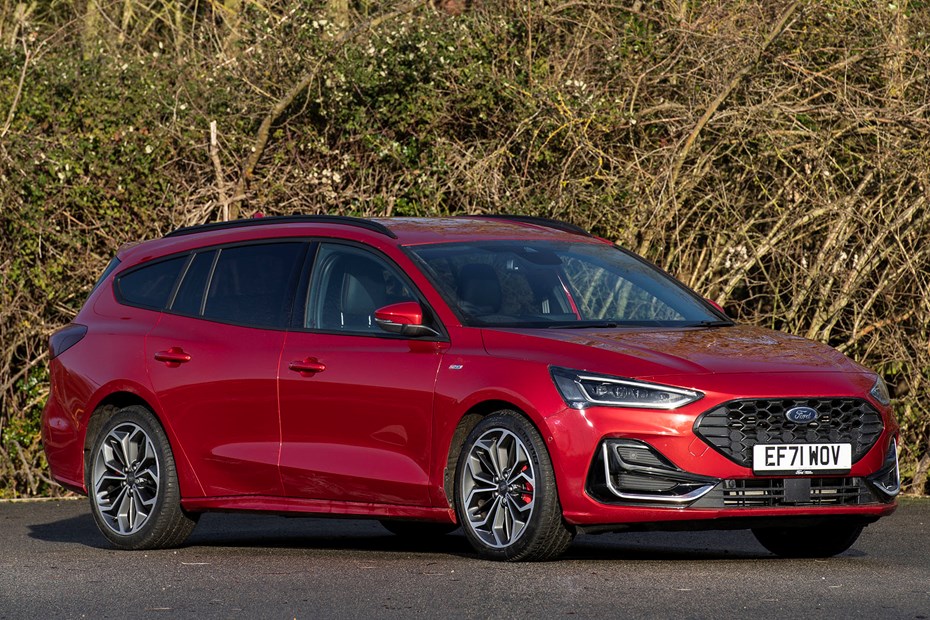
At a glance
| Price new | £30,720 - £33,770 |
|---|---|
| Used prices | £5,821 - £29,848 |
| Road tax cost | £195 |
| Insurance group | 8 - 34 |
Get an insurance quote with

|
|
| Fuel economy | 34.9 - 67.3 mpg |
| Range | 377 - 806 miles |
| Miles per pound | 5.1 - 9.0 |
| Number of doors | 5 |
| View full specs for a specific version | |
Available fuel types
Petrol
Diesel
Pros & cons
- Spacious interior and big boot
- Clever new infotainment system
- As good to drive as the hatchback
- Dim-witted automatic gearbox
- Cheapest engine labours with heavy loads
- No PHEV or hybrid engine option
Ford Focus Estate rivals
Overview
Since the Mk1 model was introduced in the 1990s, the big selling Ford Focus has been one of the UK’s best hatchbacks. It serves up a winning combination of stunning driving dynamics and good practicality. However, what if you want a Focus but need some extra space to carry things like dog crates and pushchairs? Well, you buy a Focus Estate, of course.
Apart from its longer, more spacious boot, the Ford Focus Estate is identical to the standard hatchback – and, as such, it received the same suite of improvements Ford applied to the standard car when it was facelifted back in 2021. These include a new front bumper, fresh LED headlights and a redesigned grille with a big ‘Ford’ badge in its centre.
Inside, the revised Focus Estate also gained a new 13.2-inch widescreen infotainment system, which runs on the same SYNC 4 software found in the pure-electric Mustang Mach-E SUV. Practicality remains the same as the pre-facelift model – there’s 575 litres of boot space with the rear seats up or 1,650 litres with the bench stowed.
The trim-level structure is near-enough the same as before, too. The range opens with Ford’s back-to-basics Trend model, above which sits the Titanium, sporty ST-Line and off-road inspired Active specifications. The pre-facelift car’s flagship Vignale variant has been repurposed as the badge for Ford’s option pack, though, which bolts-on items like a digital gauge cluster, electrically adjustable seats and rear privacy glass.
The trouble with the Ford Focus Estate is its age. There are plenty of newer rivals eager to knock it off its perch, including the recently updated Volkswagen Golf Estate, the revised Skoda Octavia Estate, the Hyundai i30 Tourer and the Vauxhall Astra Sports Tourer.
‘The Ford Focus Estate is a great choice for keen drivers, especially if you’re buying one to keep. Its lack of a plug-in hybrid system means there are better options for company car drivers, though.’
Luke Wilkinson, Deputy Editor
What’s more worrying is that, despite its extensive cosmetic and technology tweaks, Ford hasn’t made many changes to the Focus Estate’s engine range. Like pre-facelift cars, buyers have a choice of three 1.0-litre petrol engines (two of which feature mild hybrid assistance) and one diesel engine, while performance fans can have a 280hp 2.3-litre petrol with the ST model.
There’s nothing inherently wrong with the Focus Estate’s engine range, but we can see Ford’s decision to shy away from electrification becoming a problem for the car. Rival brands Skoda and Volkswagen are rapidly shifting towards electrification – both now offer plug-in hybrid powertrains with electric-only ranges of more than 70 miles. That makes them a more interesting proposition for company car drivers than the Focus.
Read on for our in-depth review of the Ford Focus Estate. Over the next few pages, we’ll consider each aspect of the car in detail, starting with its practicality and moving through its safety, comfort, technology, running costs, performance and driving experience. We’ll then give our final rating in our verdict page. If you’d like to learn more about how we reached our verdict on the Focus, check out our how we test cars explainer page.



